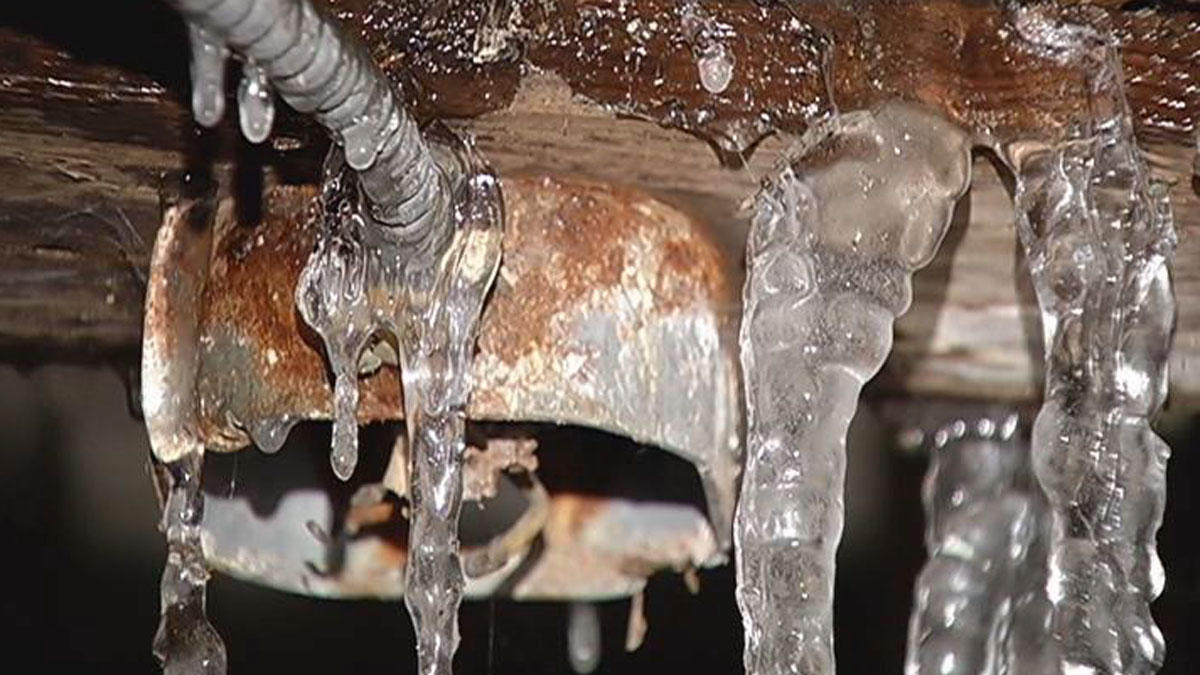Preventing Frozen Pipes in Winter: Key Strategies
Preventing Frozen Pipes in Winter: Key Strategies
Blog Article
We've noticed this post relating to How to prepare your home plumbing for winter weather directly below on the internet and thought it made good sense to write about it with you on this page.

Cold weather can damage your plumbing, particularly by freezing pipes. Below's exactly how to avoid it from occurring and what to do if it does.
Intro
As temperatures decrease, the risk of icy pipelines rises, possibly causing pricey fixings and water damages. Comprehending how to avoid frozen pipes is crucial for homeowners in chilly climates.
Understanding Frozen Pipes
What causes pipes to freeze?
Pipelines ice up when subjected to temperatures below 32 ° F (0 ° C) for expanded durations. As water inside the pipelines freezes, it increases, taxing the pipe wall surfaces and potentially creating them to break.
Risks and damages
Icy pipes can lead to supply of water interruptions, home damages, and costly fixings. Ruptured pipes can flooding homes and cause substantial architectural damage.
Indications of Frozen Water Lines
Determining icy pipes early can avoid them from rupturing.
How to determine frozen pipes
Try to find lowered water circulation from faucets, unusual odors or sounds from pipelines, and noticeable frost on exposed pipelines.
Prevention Tips
Shielding prone pipelines
Cover pipes in insulation sleeves or use warmth tape to shield them from freezing temperatures. Concentrate on pipelines in unheated or outside locations of the home.
Heating strategies
Maintain interior rooms appropriately heated up, especially areas with pipes. Open cupboard doors to allow cozy air to distribute around pipelines under sinks.
Protecting Outdoor Plumbing
Yard hose pipes and exterior faucets
Separate and drain pipes yard tubes before wintertime. Install frost-proof faucets or cover outside taps with protected caps.
What to Do If Your Pipes Freeze
Immediate activities to take
If you believe icy pipelines, keep faucets available to relieve stress as the ice melts. Utilize a hairdryer or towels soaked in hot water to thaw pipes slowly.
Long-Term Solutions
Structural modifications
Think about rerouting pipes far from exterior walls or unheated locations. Add additional insulation to attics, cellars, and crawl spaces.
Updating insulation
Purchase top notch insulation for pipes, attics, and walls. Correct insulation aids preserve consistent temperatures and reduces the threat of icy pipelines.
Final thought
Protecting against frozen pipes needs positive procedures and quick reactions. By recognizing the causes, indications, and safety nets, home owners can shield their plumbing during cold weather.
5 Ways to Prevent Frozen Pipes
Drain Outdoor Faucets and Disconnect Hoses
First, close the shut-off valve that controls the flow of water in the pipe to your outdoor faucet. Then, head outside to disconnect and drain your hose and open the outdoor faucet to allow the water to completely drain out of the line. Turn off the faucet when done. Finally, head back to the shut-off valve and drain the remaining water inside the pipe into a bucket or container. Additionally, if you have a home irrigation system, you should consider hiring an expert to clear the system of water each year.
Insulate Pipes
One of the best and most cost-effective methods for preventing frozen water pipes is to wrap your pipes with insulation. This is especially important for areas in your home that aren’t exposed to heat, such as an attic. We suggest using foam sleeves, which can typically be found at your local hardware store.
Keep Heat Running at 65
Your pipes are located inside your walls, and the temperature there is much colder than the rest of the house. To prevent your pipes from freezing, The Insurance Information Institute suggests that you keep your home heated to at least 65 degrees, even when traveling. You may want to invest in smart devices that can keep an eye on the temperature in your home while you’re away.
Leave Water Dripping
Moving water — even a small trickle — can prevent ice from forming inside your pipes. When freezing temps are imminent, start a drip of water from all faucets that serve exposed pipes. Leaving a few faucets running will also help relieve pressure inside the pipes and help prevent a rupture if the water inside freezes.
Open Cupboard Doors
Warm your kitchen and bathroom pipes by opening cupboards and vanities. You should also leave your interior doors ajar to help warm air circulate evenly throughout your home.

Hopefully you enjoyed reading our post about 6 Ways to Prevent Frozen Pipes. Thanks so much for taking time to read through our blog. Do you know somebody else who is involved in the subject? Feel free to promote it. We recognize the value of your readership.
Call Today Report this page